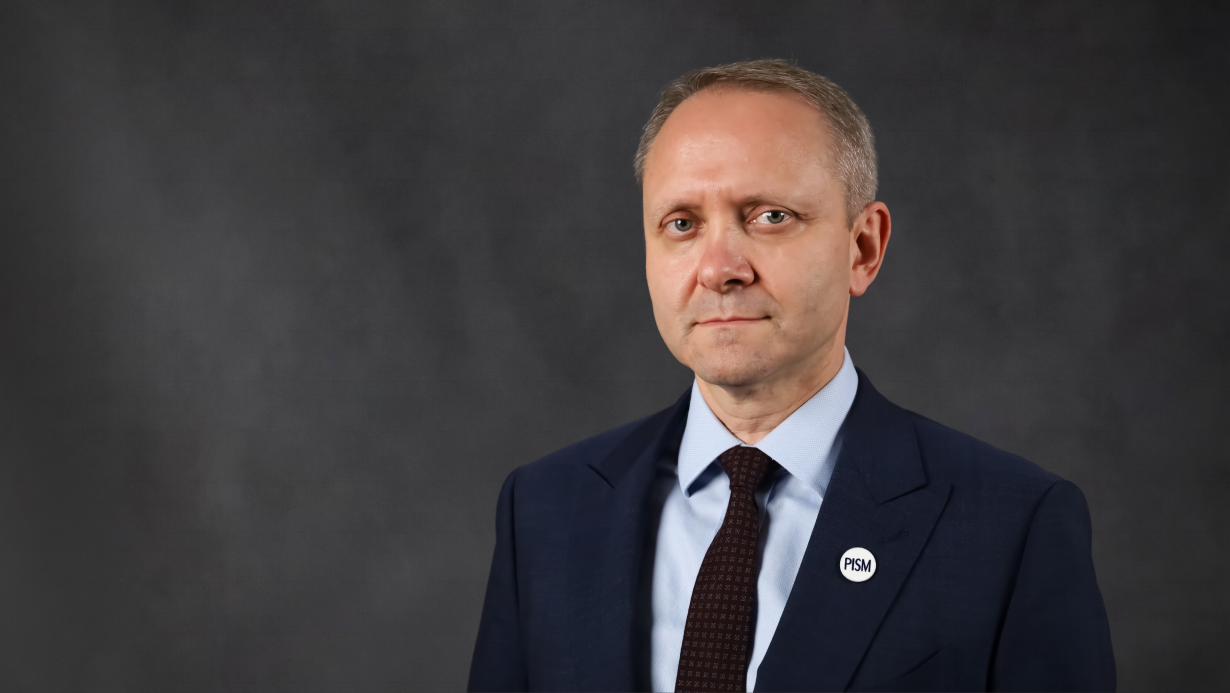NATO Allies Look for a New Secretary General
On 12 March, Romanian President Klaus Iohannis officially announced his candidacy for NATO Secretary General. Dutch Prime Minister Mark Rutte is also running for the post. The decision on Jens Stoltenberg’s successor is expected to be approved by the allies at the NATO summit in Washington in July.
 JOHANNA GERON / Reuters / Forum
JOHANNA GERON / Reuters / Forum
What is the role of the NATO Secretary General?
The SecGen, as he is known in the Alliance, is the highest position in NATO’s civilian structures. His main task is to lead consultations, from meetings at the level of ambassadors, defence and foreign ministers, to summits of heads of state and government, which are necessary for making decisions. The SecGen’s actions can facilitate consensus, on which decision-making in NATO is based. While traditionally he should not criticise the actions of individual countries, he can use his political experience, contacts, and position to exert pressure and influence as needed. Because of the recognition and stature of the position, the SecGen is a major part of NATO strategic communications, such as in the area of deterrence. It has become a well-established tradition in the Alliance that the military commander is an American, while the position of secretary general is held by a politician from Europe. The post has been held since October 2014 by former Norwegian Prime Minister Jens Stoltenberg. During his term, he has led NATO through the Alliance’s adaptation to the growing threats from Russia. Among other things, he played an important role in negotiating a compromise on NATO’s new strategy, which identifies Russia as the main military threat to the Alliance. Due to the rapidly deteriorating security situation, Stoltenberg’s high approval rating among the allies and the problem of finding a successor, his term was extended three times, in 2018 for a full term, and in 2022 and 2023 for a year each. After the last extension, the search began to find a successor, who is expected to be approved at the July NATO summit in Washington, D.C., and should take office this fall.
How is the candidate selection process going and is it controversial?
The selection of the next secretary general is based on informal consultations among the allies. Since the decision requires the consent of all countries, potential candidates often do not officially announce their candidacy so that there is no formal competition in which there are a winner and losers. In this way, those who are not elected incur fewer political costs. Among the names suggested as potential candidates to take over the Alliance after Stoltenberg are Estonian Prime Minister Kaia Kallas, former Prime Minister of Latvia Arturs Krišjānis Kariņš, Danish Prime Minister Mette Frederiksen, former British Defence Minister Ben Wallace, and Dutch Prime Minister Mark Rutte. In recent weeks, the strongest countries—the U.S., Germany, France and the UK—have begun to signal their support for the Dutch prime minister. Although their support is often decisive, the candidacy of a politician from Western Europe has stirred up controversy from the countries of the Alliance’s Eastern Flank. There have been comments that 25 years after NATO’s first post-Cold War enlargement, the time has come for a politician from Central and Eastern Europe to take over as Secretary General. Rutte has been criticised for, among other things, that during his tenure as prime minister the Netherlands did not show enough determination to strengthen its military capabilities and did not allocate at least 2% of GDP to defence. The Romanian president probably detected that the lack of support from some countries for Rutte’s candidacy increased the chances of a compromise candidate from an Eastern Flank country and officially announced that he would run for the post. In the past, tensions over the selection of a new secretary general surfaced, for example in 2009 when Turkey blocked the candidacy of Danish Prime Minister Anders Fogh Rasmussen. There were also various informal candidacies. In the end, this did not have a significant impact on the Alliance’s image or credibility. However, Iohannis’ official announcement that he will run for office indicates not only the region’s growing ambitions but also possible differences in the approach to deterring Russia. This may prompt Rutte to make a public presentation of his priorities for strengthening NATO’s credibility in order to convince countries that have so far not declared their support for him.
What challenges will the new Secretary General face?
The most immediate task will be to adapt NATO to threats from Russia while putting pressure on the allies to maintain support for Ukraine in the long term. A major challenge will be to build consensus on Ukraine’s admission to NATO. The Secretary General will have to mobilise European allies to increase defence spending and rapidly produce arms and ammunition for their own and Ukraine’s needs. As the U.S. will increasingly focus on the threat from China, the main goal should be to strengthen NATO’s European pillar so that the Alliance is as little dependent as possible on U.S. military support. The Alliance will need to have not only credible defence and deterrence capability but also to combat terrorist threats and influence security in the Indo-Pacific through cooperation with Japan, Australia, South Korea, and New Zealand. In this way, despite the difference in threat perception, the Alliance will be useful to all member states. If Donald Trump returns to the U.S. presidency, as one who has criticised NATO in the past and threatened not to defend allies, the Secretary General’s role will be to convince the public and decision-makers in the U.S. that the Alliance and a stable Europe also contribute to American security. The new Secretary General must therefore be an experienced and credible politician to advance NATO’s military adaptation and assure support for Ukraine, while maintaining the Alliance’s cohesion and strong transatlantic ties.



.jpg)
.jpg)
